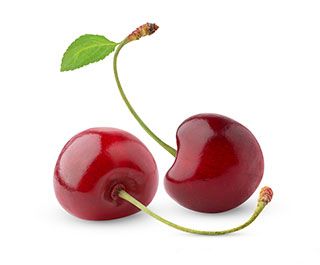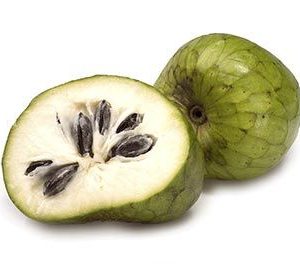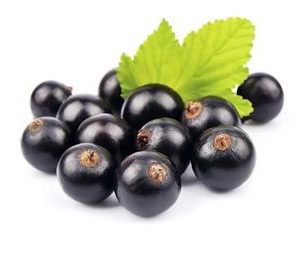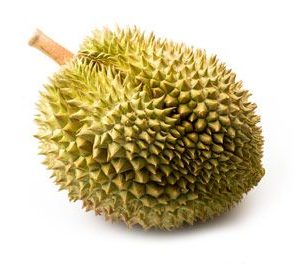Sweet cherries get their name from the naturally sweet flavor they possess compared to tart or sour berries, which are known for their acidic content. Sweet cherries can take on a light yellow or even a dark mahogany appearance.
While sweet cherries are popular in North America, the plant’s progenitors came from the other side of the Atlantic Ocean — Western Asia and Eastern Europe, encompassing the Caspian Sea to the Balkans. Like peaches and apricots, this fruit is considered a drupe, which is characterized by a thin skin with a single seed inside.
Most sweet cherry varieties were developed from wild cherries. Bing cherry, one of the most popular sweet cherry varieties, was created by crossing the Black Republican cherry and Napoleon (also known as Royal Ann), a cherry tree from France. Seth Lewelling, the creator of the Bing cherry, named it after his foreman, Ah Bing.
Sweet cherries are best eaten fresh and raw. To pick the finest cherries, look for ones that are firm, with shiny skin and juicy flesh. One good tip is to examine the stems, which should be bright green, indicating freshness.
Growing cherry trees will take some work and prior gardening experience. Ideally, they should be planted in early spring in a big garden. According to the Missouri Botanical Garden, prunus avium trees can grow 20 to 30 feet tall when cultivated. Potential diseases to watch out for include brown rot, black knot, bacterial canker and leaf curl. In addition, insect infestations may appear, particularly aphids, fruit flies and saw flies.
The United States has a long history of cherry production. Seeds were first brought to America by English Settlers, eventually moving westward as the population expanded. Today, states that produce the highest amount of sweet cherries include California, Oregon and Washington. Smaller yields are found in Utah, Montana, Colorado, Michigan, New York and Pennsylvania.
Health Benefits of Sweet Cherries
One of the most interesting health benefits of sweet cherries is their unique set of antioxidants. Anthocyanins, which give sweet cherries and other fruits and vegetables their red color, are one of them. Research shows that this specific class of antioxidants has a wide range of applications for conditions like diabetes, inflammation, neuronal diseases and cardiovascular health.
One study published in the journal Nutritional Neuroscience highlighted the connection between anthocyanins and lower risk of Alzheimer’s disease. Cyanidin, a type of anthocyanin found in sweet cherries, may also help reduce the risk for cancers. In addition, cherries may exhibit cancer-fighting properties by helping induce apoptosis and inhibiting the proliferation of cancer cells.
Sweet cherries also contain the antioxidant melatonin, a hormone also produced by the pineal gland, which has been found to be helpful in managing depression and sleep regulation. Plus, they’re a good source of several minerals that are essential for maintaining good health in the long run, including iron and phosphorus, as well as potassium, which may help promote heart health and maintain normal blood pressure levels.
Despite these potential benefits, be sure to consume sweet cherries in moderation, as they contain fructose, which can be harmful to your health in excessive amounts. To learn more about the nutritional value of sweet cherries, refer to the nutrition facts table below:
Sweet Cherries Nutrition FactsServing Size: 3.5 ounces (100 grams), raw |
||
| Amt. Per Serving |
% Daily Value* |
|
| Calories | 63 | |
| Total Fat | 0.20 g | |
| Saturated Fat | 0.038 g | |
| Trans Fat | ||
| Cholesterol | 0 mg | |
| Sodium | 0 mg | |
| Total Carbohydrates | 16.01 g | |
| Dietary Fiber | 2.1 g | |
| Sugar | 12.82 g | |
| Protein | 1.06 g | |
| Vitamin A3 µg | Vitamin C | 7 mg |
| Calcium13 mg | Iron | 0.36 |
Studies on Sweet Cherries
A study on how sweet cherries might affect blood cholesterol and inflammation involved 18 healthy men and women who consumed the fruit for 28 days. Blood tests were taken before, halfway through and after the study. Results showed positive anti-inflammatory effects, which the researchers reported should make sweet cherries beneficial for managing inflammatory diseases.
In another study, scientists determined that anthocyanins like cyanidin and peonidin in sweet cherries, as well as hydroxycinnamic acids (including neochlorogenic acid, chlorogenic acid and p-coumaric acid derivatives) have the ability to protect neuronal cells from damage. Phenols such as quercetin, kaempferol and isorhamnetin were also found to protect cells from oxidative stress, giving cherries what researchers termed “antineurodegenerative” abilities.
Sweet Cherries Fun Facts
Sweet cherries have been around the world for centuries. The Greek philosopher Theophrastus described them in his writings. He was known for being a student of Aristotle, living from 326 B.C. to 287 B.C. The word “cherry” is a derivative of the French word “cerise,” which comes from the Latin word cerasum, the classical name for Giresun, a city in present-day Turkey.
Summary
Sweet cherries are loaded with antioxidants and other nutrients that may help lower your risk for various diseases. It also offers anthocyanins that have been found to manage inflammation. In addition to being wildly popular for snacking or as a component in fruit salads and confections, these little fruits pack quite a nutritional punch.







Reviews
There are no reviews yet.